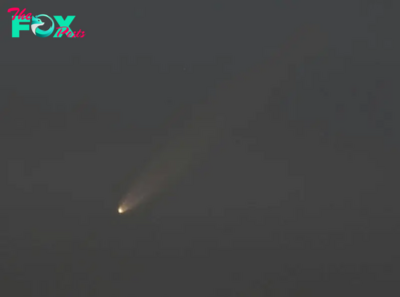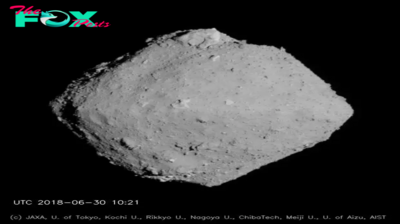Science
Betelgeuse's mysterious spin could be a cosmic illusion caused by its enormous 'boiling' surface
Scientists may have finally solved the mystery of why the gigantic, dying star Betelgeuse appears to be spinning faster than is theoretically possible. What scientists previously interpreted as rapid rotation may actually be an optical illusion caused by the behemoth's "boiling" surface, a new study argues.
Betelgeuse is a red supergiant that is around 1,000 times more massive than the sun, making it one of the largest known stars in the universe. To put that into context, if you swapped the sun with Betelgeuse, the giant star would extend past the orbit of Jupiter (and Earth, along with Mercury, Venus and Mars, would be instantly incinerated).
Its extreme size also makes it one of the brightest stars in the night sky, and it can easily be spotted with the naked eye in the constellation Orion. However, Betelgeuse has been known to dim and brighten over time.
Betelgeuse is only around 10 million years old, which makes it a stellar infant compared with stars like the sun, which is more than 4.6 billion years old. Despite its young age, Betelgeuse is already on the verge of dying; it has burned up most of its reserves of hydrogen because it's so much hotter and more massive than other stars.
And when it eventually runs out of fuel — which could happen in the next few thousand years, or even within our lifetimes — it will explode in a supernova, which will shine as bright as a full moon in the sky for weeks.
Related: Here's what the supergiant star Betelgeuse will look like when it goes supernova

In 2018, observations of Betelgeuse collected by the Atacama Large Millimeter/submillimeter Array (ALMA) telescope in Chile showed that the star was spinning at around 11,200 mph (18,000 km/h), researchers wrote in a statement. This is extremely out of character for red supergiants, which are expected to spin at least 100 times more slowly.
-

 Science2d ago
Science2d agoWhy Risky Wildfire Zones Have Been Increasing Around the World
-

 Science2d ago
Science2d agoIt’s Time to Redefine What a Megafire Is in the Climate Change Era
-

 Science4d ago
Science4d ago4 Astronauts Return to Earth After Being Delayed by Boeing’s Capsule Trouble and Hurricane Milton
-

 Science4d ago
Science4d agoThe Elegance and Awkwardness of NASA’s New Moon Suit, Designed by Axiom and Prada
-

 Science1w ago
Science1w agoSpaceX Launches Its Mega Starship Rocket. This Time, Mechanical Arms Catch It at Landing
-

 Science3w ago
Science3w agoYou Won’t Want to Miss October’s Rare Comet Sighting. Here’s How and When You Can See It
-

 Science1m ago
Science1m agoA New Spacecraft Could Help Determine if There’s Life on a Moon of Jupiter
-

 Science1m ago
Science1m agoWe Can Thank Deep-Space Asteroids for Helping Start Life on Earth



























